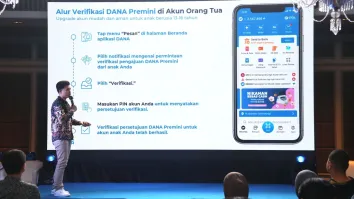
Financial crimes to continue to squeeze bank profits
More sophisticated crooks and stricter rules are expected to increase compliance costs.
The banking costs of complying with regulations against financial crimes in the Asia-Pacific region are expected to rise further, amidst increasing labour and digitalisation expenses, according to financial experts.
“This is compounded by the fact that many risk management protocols still require substantial human intervention,” Rod Francis, a partner in Financial Services at Oliver Wyman LLC, told Asian Banking & Finance at Sibos 2024 in Beijing in October.
Francis said leveraging data and technology would make financial institutions more efficient and effective in managing these costs. But this is unlikely to happen in the near term, he added.
Weilie Huang, a consultant in financial crime compliance for the Asia-Pacific region at LexisNexis Risk Solutions, Inc. said regional costs would continue to influence this year due to technological advances, regulatory changes, and financial institutions' response.
“Specific projected value requires more detailed data analysis and modelling predictions, but based on current trends and challenges, an increase in compliance costs seems inevitable,” he told Asian Banking & Finance in an emailed reply to questions.
The region’s labour expenses accounted for about 41% of total financial crime compliance costs, which was estimated to have reached $45b last year, according to a report that LexisNexis commissioned to Forrester Research, Inc.
Huang said financial institutions have had to hire skilled workers who could deal with regulations that have become more sophisticated. Training requirements have also multiplied.
This competition for talent drives up salaries, affecting corporate budgets and potentially slowing critical processes such as customer onboarding and transaction screenings, according to the Forrester report on the region released in March.
Banks have also had to invest in technology to improve their fighting chance against financial crimes.
Avalon Ingram, head of Financial Crime Compliance Experts at Swift, said technology helps the industry monitor and detect crimes, but these still need to be reviewed by humans.
“To address [this], institutions need effective internal control measures,” she told Asian Banking & Finance at Sibos 2024.
“Compliance today looks very different from what was acceptable in the past. Previously, it was enough to deploy a vendor-led solution — just switch it on and move forward.”
Technology was the second-biggest driver of financial crime compliance costs in the Forrester report, accounting for 32% of total spending. Investments in Know Your Customer (KYC) software, artificial intelligence (AI), and machine learning (ML) all cost money.
“As financial crimes grow more technologically advanced, organisations in [the Asia-Pacific region] face rising pressure to use solutions that leverage AI and ML for greater efficiency and improved accuracy in fraud detection,” Huang said.
More companies use AI to combat financial crime especially in cross-border transactions, according to Sanjeev Chatrath, Ernst & Young LLP Asia-Pacific Payments leader.
As much as 10% of cross-border payments trigger alerts for a financial crime, but almost 99% of those are false positives, he told the Beijing event.
In the region, China and Japan lead in compliance costs at $20.4b and $17.8b, respectively, mainly because of their market size, Francis said.
“When you apply that scale to a risk management program — whether it’s financial crime, anti-money laundering, economic sanctions, or even fraud — the volume of activity is inevitably larger, effectively supersizing the risk,” he told Asian Banking & Finance separately at the event.
“In a country like China, which has significantly enhanced its anti-money laundering requirements, that results in exponential cost increases,” Francis said. Japan faces a similar challenge but it has more stable compliance structures, partly due to enforcement that is less strict, he added.
‘Always a step behind’
Huang said cross-border payment flows present unique challenges because they have to be screened robustly for money laundering and fraud risks.
Japan’s advanced KYC frameworks and China’s recent updates to its Anti-Money Laundering Law show the growing emphasis on regulatory technology (regtech) to balance operational efficiency with compliance.
The Global Coalition to Fight Financial Crime APAC Chapter in a report in June estimated $114b in global financial losses from scams annually. The average loss per victim was $12,000, and the loss per citizen at $62.
The report identified more than 20 types of scams, with investment, impersonation, remote access, romance, e-commerce, business email and invoice redirection scams as the most lucrative.
Huang said he expects more financial institutions to turn to advanced technology solutions against sophisticated financial crimes as they accelerate their digital transformation. “Enhanced collaboration strengthens APAC’s defence against evolving financial criminal methodologies,” he added.
Francis cited the need for a stronger global push against financial crimes. “If we’re aiming for real change, it needs to start at the legislative level, ideally working toward global standards that facilitate secure information sharing for financial crime prevention.”
Chatrath said the increasing interplay between fintech and traditional financial institutions is another trend to watch. “We also see fintechs wanting to access the infrastructure that larger institutions have, whether it's capital or customer base. In these cases, again, it's a very symbiotic relationship.”
But Ingram said technology is not enough.
“Financial crime is inherently transnational, and until we streamline cross-border communications, we’ll always be a step behind,” she said. “It needs to be a joint effort between banks, law enforcement, regulators, social media, and telecommunication companies.”



















 Advertise
Advertise







